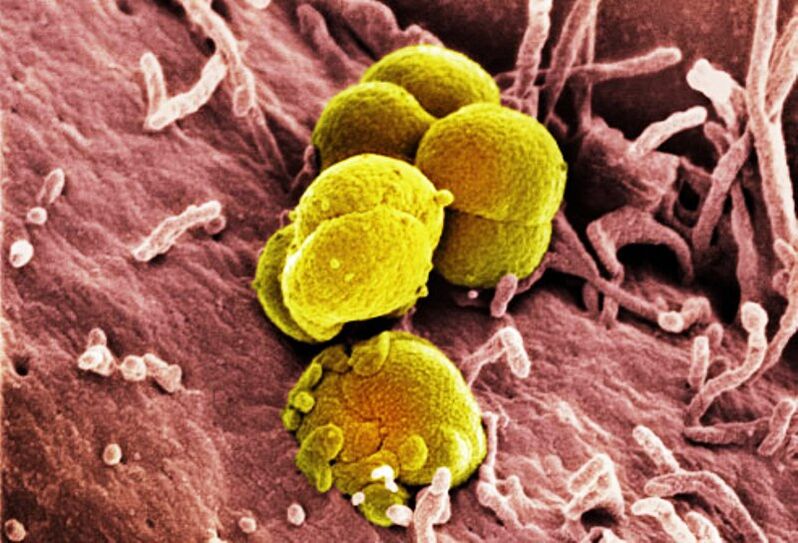Chronic prostatitis is an inflammatory process of the prostate gland in a man with its long (more than six months) course.
Usually this pathology is the result of an infectious process.
Treatment of chronic prostatitis is aimed at eliminating the causative agent of the infection.
The lack of such treatment can lead to the development of various functional disorders and complications, up to male infertility.

Causes of chronic prostatitis Various pathogenic (pathogenic) microorganisms lead to the development of an inflammatory reaction with its long course.
There are 2 main groups of pathogens of chronic prostatitis:
- Nonspecific bacterial infection–Pathogenic microorganisms that can lead to the development of an inflammatory reaction in different organs. These include streptococci, Escherichia coli, Klebsiella, Proteus, Staphylococcus.
- Specific infection.Pathogenic microorganisms parasitize only in the structures of the urogenital tract of a man (chlamydia, ureaplasma, Trichomonas).
Knowledge of the cause of the development of chronic inflammatory process of the prostate is necessary for the subsequent choice of rational etiotropic therapy.

It is aimed at destroying the pathogenic pathogen.
Other factors can also become the reasons for the development of chronic prostatitis.
Stagnation of blood in the small pelvis leads to insufficient oxygen exchange in the tissues of the organs.
This affects their regeneration and resistance to infection.
A general decrease in the body's protective function provokes the development of inflammation.
Lack of physical activity has a detrimental effect on human health and leads to a decrease in the body's defenses.
The factors that lead to the development of chronic prostatitis include problems in the patient's intimate life.
This interruption of intercourse without ejaculation, irregular sex life, a long period of abstinence.
The consequences of trauma often affect the condition of the genitals.
Overwork, stressful situations can, in combination with other reasons, cause problems with the prostate.
Drinking alcohol and smoking in large quantities lead to disruption of the functioning of the reproductive system in men.
Classification of prostatitis
There are three types of disease:
- Bacterial;
- Non-bacterial;
- Prostatodynia.
The first type is characterized by the detection of microorganisms in the discharge.
To treat this variety, antibacterial drugs are needed.
A non-bacterial condition is a condition in which there are no bacteria in the secretion of the gland.
Prostatodynia is a process when the patient presents complaints characteristic of prostatitis, but there are no abnormalities in the analyzes of the prostate secretion.
Treatment of chronic prostatitis with concomitant pathology
Patients who present with prostate problems often have other problems.
These can be cardiovascular diseases, diseases of the respiratory and digestive systems.
For these patients, the therapy regimen will be different.
In order to correct the treatment, it is necessary to undergo an appropriate diagnosis.
For consultation of such cases, narrow specialists may be involved.
Treatment of chronic prostatitis in young people
By the age of 30, an infectious agent is often the cause of prostatitis.
This is due to the lifestyle of young people.
Untimely treatment of bacterial and viral infections affects.
Promiscuous sex life, neglect of hygiene and a sedentary lifestyle play a role.
Patients rarely see a doctor at the first sign of illness.
The disease progresses, becomes chronic.
It is worth paying attention to these problems and minimizing the risk of their impact.
For preventive purposes, an annual examination is recommended.
Obesity treatment
The problem with extra pounds can have a negative effect on the internal organs of a man.
An increase in cholesterol, blood pressure and glucose levels leads to metabolic disturbances.
Lack of constant physical activity causes stagnation of blood in the pelvic organs and contributes to the development of inflammation.
Timely weight loss and prevention can have a beneficial effect on overall health.



























